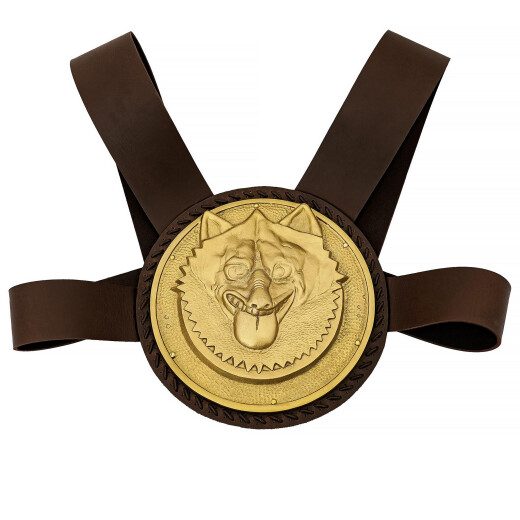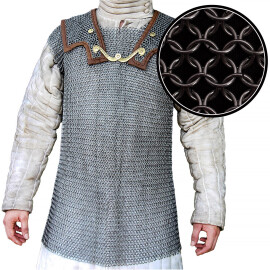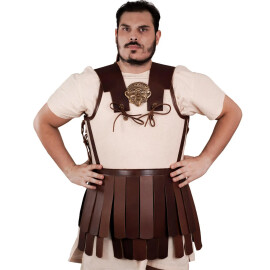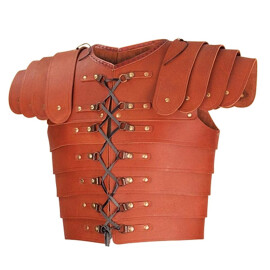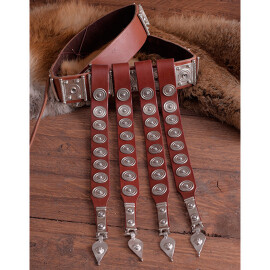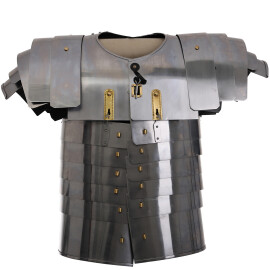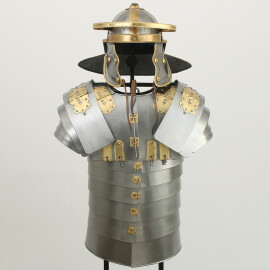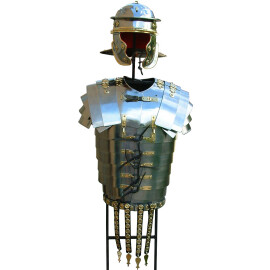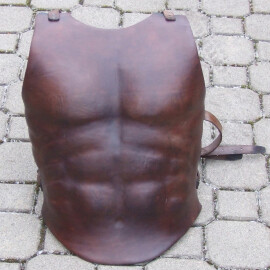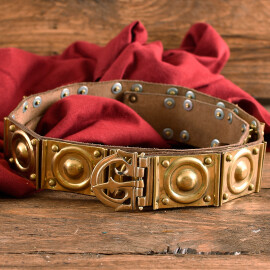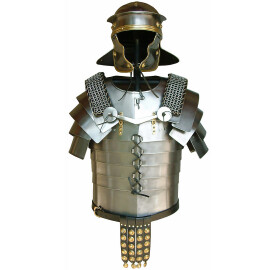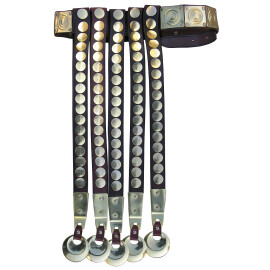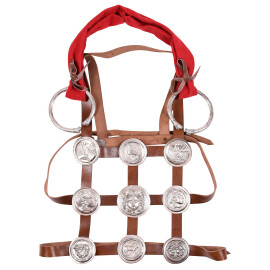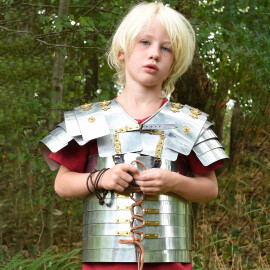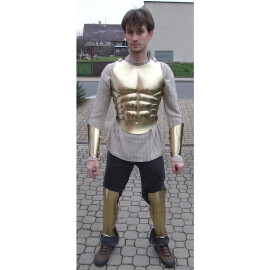Cardiophylax, Iberian Chest Armour with Brass Wolf Relief
This Iberian chest armour is crafted from the highest quality GENUINE LEATHER and features a BRASS Iberian wolf motif firmly riveted onto the chest piece. Its upper and lower belt has a length of 58.5cm and 39cm, respectively. The chest piece has a diameter of approximately 25cm. More information...
Cardiophylax, Iberian Leather Chest Armour with Brass Wolf Relief
With this amazing Iberian Cardiophylax, feel like the true Caetrati or Scutari from ancient Iberia while you charge fiercely on your Roman or Carthaginian Opponents with your fellow reenactor friends. Caetrati were true masters of guerrilla warfare, and their light Caetra shiels made them more agile and nimble in skirmishes than the more heavily protected Scutari, whose larger shields made them more suited to hold the line. But both types of troops proved their value countless times during the Punic Wars in Hannibal’s army. While this legendary general used the celts almost as expendable fierce shock troops and regarded his precious battle-hardened and highly disciplined Spanish infantry and cavalry as “elite” troops, just a glance at their impressive achievements over several centuries is enough to understand why!
The majority of these soldiers wore simple tunics and lacked real armour because they relied on greater mobility. The cardiophylax was a very common piece of protection in ancient Iberia, most likely circular and with decorations and reliefs depicting animals and patterns. Strabo states the Celtiberians used a linen cuirass, probably in the Greek style. On the other hand, a number of vase paintings clearly show Iberian infantrymen wearing cuirasses of mail armour, with leather straps hanging down to protect the abdomen, but these heavier types of armour were probably used by the scutarii instead.
Iberian warriors had been fighting as mercenaries throughout Europe since the 5th century BC, with their ferocity in battle and their fighting skills making them very good additions to any ancient army. The Carthaginian general Hannibal made excellent use of them during his campaigns against Rome during the Second Punic War; when the Romans defeated Carthage and conquered its colonies in Hispania, they soon began to expand their borders in the region; it took them 200 years to fully conquer and pacify the region. These warriors fought vigorously against the Romans, especially under the leadership of Viriathus the Lusitanian and his guerrilla tactics that the Romans had never seen before. Being agile by nature, and wearing almost no armour at all, these warriors were extremely mobile and would use hit-and-run tactics to harass the enemy and break their formations.
A high-quality product made by Lord Of Battles®
Write to our specialist


